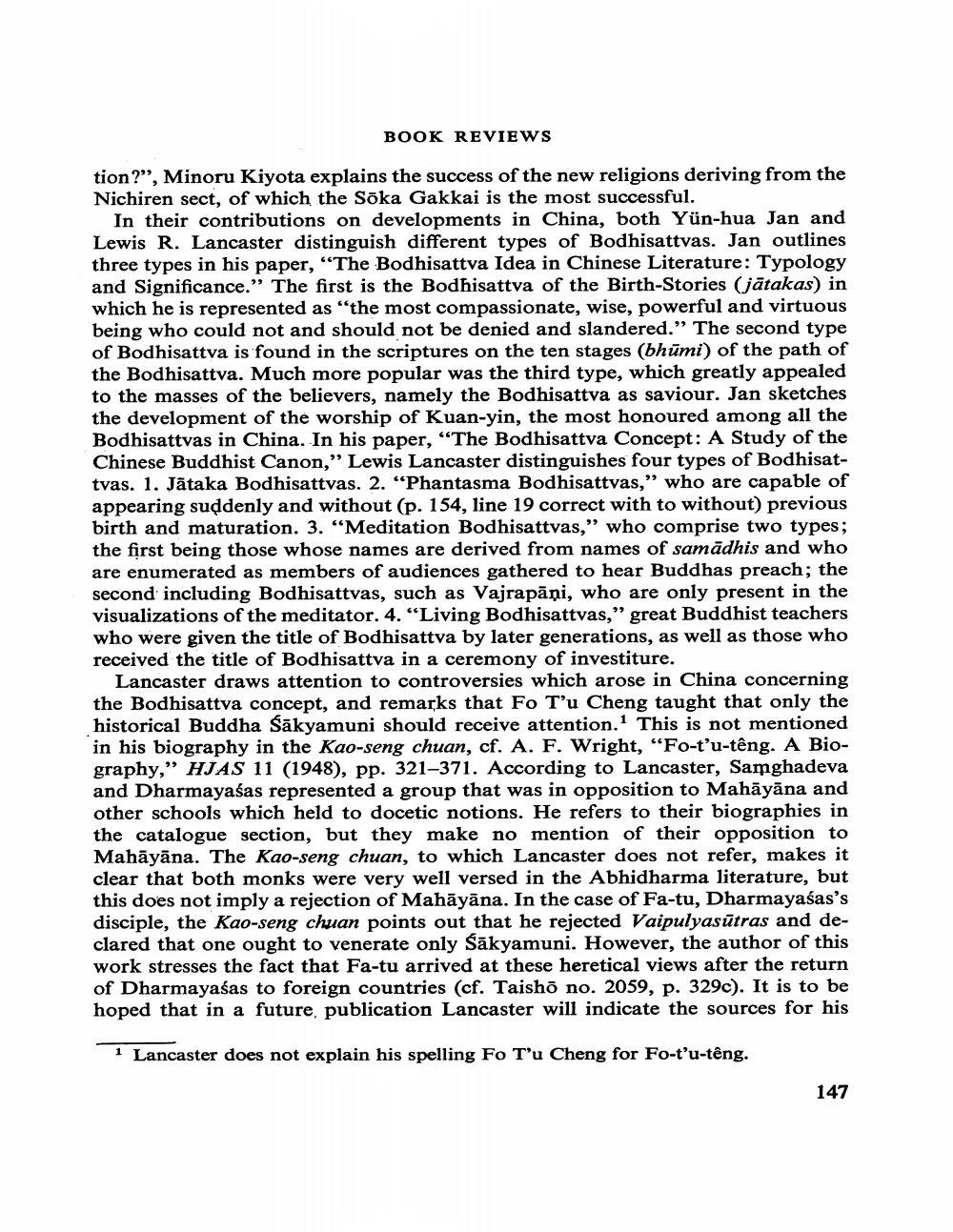Book Title: Book Reviews Author(s): J W De Jong Publisher: J W De Jong View full book textPage 2
________________ BOOK REVIEWS tion?", Minoru Kiyota explains the success of the new religions deriving from the Nichiren sect, of which the Soka Gakkai is the most successful. In their contributions on developments in China, both Yün-hua Jan and Lewis R. Lancaster distinguish different types of Bodhisattvas. Jan outlines three types in his paper, "The Bodhisattva Idea in Chinese Literature: Typology and Significance." The first is the Bodhisattva of the Birth-Stories (jātakas) in which he is represented as "the most compassionate, wise, powerful and virtuous being who could not and should not be denied and slandered." The second type of Bodhisattva is found in the scriptures on the ten stages (bhūmi) of the path of the Bodhisattva. Much more popular was the third type, which greatly appealed to the masses of the believers, namely the Bodhisattva as saviour. Jan sketches the development of the worship of Kuan-yin, the most honoured among all the Bodhisattvas in China. In his paper, "The Bodhisattva Concept: A Study of the Chinese Buddhist Canon,” Lewis Lancaster distinguishes four types of Bodhisattvas. 1. Jātaka Bodhisattvas. 2. "Phantasma Bodhisattvas," who are capable of appearing suddenly and without (p. 154, line 19 correct with to without) previous birth and maturation. 3. “Meditation Bodhisattvas," who comprise two types; the first being those whose names are derived from names of samādhis and who are enumerated as members of audiences gathered to hear Buddhas preach; the second including Bodhisattvas, such as Vajrapāņi, who are only present in the visualizations of the meditator. 4. “Living Bodhisattvas," great Buddhist teachers who were given the title of Bodhisattva by later generations, as well as those who received the title of Bodhisattva in a ceremony of investiture. Lancaster draws attention to controversies which arose in China concerning the Bodhisattva concept, and remarks that Fo T'u Cheng taught that only the historical Buddha Sākyamuni should receive attention. This is not mentioned in his biography in the Kao-seng chuan, cf. A. F. Wright, “Fo-t'u-têng. A Biography," HIAS 11 (1948), pp. 321-371. According to Lancaster, Samghadeva and Dharmayabas represented a group that was in opposition to Mahāyāna and other schools which held to docetic notions. He refers to their biographies in the catalogue section, but they make no mention of their opposition to Mahāyāna. The Kao-seng chuan, to which Lancaster does not refer, makes it clear that both monks were very well versed in the Abhidharma literature, but this does not imply a rejection of Mahāyāna. In the case of Fa-tu, Dharmayaśas's disciple, the Kao-seng chuan points out that he rejected Vaipulyasūtras and declared that one ought to venerate only Sākyamuni. However, the author of this work stresses the fact that Fa-tu arrived at these heretical views after the return of Dharmayaśas to foreign countries (cf. Taisho no. 2059, p. 329c). It is to be hoped that in a future, publication Lancaster will indicate the sources for his 1 Lancaster does not explain his spelling Fo T'u Cheng for Fo-t'u-têng. 147Page Navigation
1 2 3 4 5 6
